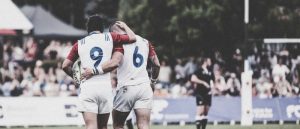Recovering from a concussion? Keeping active could be key…

A new study has revealed that exercising within 10 days of a sport-related concussion speeds up recovery and reduces the risk of prolonged symptoms in adolescents.
Adolescents experiencing a concussion tend to have a longer road to recovery compared with other age groups. Researchers from the University at Buffalo Concussion Management Clinic (NY, USA) conducted a randomized controlled trial to evaluate prescription of sub-symptom aerobic exercise – physical exercise that operates at an intensity or time period below the threshold at which symptoms of a condition begin to increase – as opposed to stretching. They found that exercise within 10 days of concussion sped up recovery and reduced the risk of prolonged post-concussion symptoms. These findings add further weight to guidelines that discourage prescribing complete rest to athletes recovering from concussions and instead suggest that concussion recovery should involve exercise for adolescents.
The new findings, published in The Lancet Child & Adolescent Health, are part of a line of research that began in 2000, when the team started investigating how to assess exercise tolerance safely and systematically.
“We based our approach on how patients with heart disease are prescribed exercise, by identifying a safe threshold below which the patient can exercise,” explained John J. Leddy, first author of the study. “We developed our Buffalo Concussion Treadmill Test by adapting a cardiac treadmill test to stress the brain instead of the heart. Since we know that regular aerobic exercise is good for brain health, the goal was to use sub-symptom threshold exercise to see if it could help the concussed brain recover.”
The current study included 118 adolescents aged 13-18 who had sustained a sport-related concussion. Twenty minutes of aerobic exercise a day was prescribed to 61 participants, while 57 participants in the placebo group carried out stretching exercises that did not elevate the heart rate.
The team built upon their 2019 study by adding two new clinics to the cohort, using heart rate monitors to measure exercise, and using an “intent to treat” research design. By contrast, the 2019 study relied on participants to self-report their exercise duration and intensity.
 Try-ing to solve the problem of accurate concussion diagnosis
Try-ing to solve the problem of accurate concussion diagnosis
A new, non-invasive yet accurate method for concussion diagnosis has been demonstrated in a study of UK professional rugby players. The diagnostic test – using saliva – would be the first non-invasive clinical test for concussion, tackling the problem of difficult pitch-side concussion diagnostics at all levels of sport.
The researchers found that those undertaking aerobic exercise took a median of 14 days to recover from a concussion, whereas those undertaking stretching exercises took a median of 19 days. Importantly, they also discovered that when aerobic exercise was performed within 10 days of injury, the risk of prolonged post-concussion symptoms was reduced by 48%.
“What we discovered is that participants were quite diligent in following their prescription and further, that those who followed the prescription or may even have exceeded the exercise prescription of 20 minutes per day recovered much faster than those that did not follow the prescription,” commented Barry S. Willer, senior author of the study. “This finding is important because delayed recovery comes with substantial cost to adolescents, including academic difficulties, risk for depression and reduced quality of life.”
No adverse effects were reported, highlighting sub-symptom aerobic exercise as a non-pharmacological and safe method of treating concussion in adolescents. In addition, the benefits of the treatment were experienced by both genders equally.
The team believes that a multitude of reasons could be responsible for the method’s effectiveness, possibly relating to physiological and neurological benefits that arise from aerobic exercise, such as enhancements to neuroplasticity.
Previous investigations focused on adults experiencing a non-sport-related concussion have discovered that this approach is less effective, and often has to be combined with other therapies. Conversely, the researchers note that aerobic exercise is often the only treatment needed by adolescent athletes.
“We are very pleased that the results of this second study provide much stronger evidence that the Buffalo Protocol is not only effective, but it is effective whoever provides the treatment and with all adolescent athletes who experience a concussion,” concluded Willer.